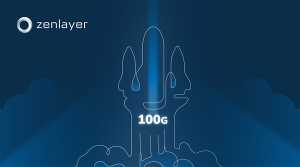With increased cloud adoption driving digital transformation in the enterprise, SD-WAN has quickly emerged as an integral part of IT strategies.
Research from Gartner indicates that by the end of 2019, 30% of enterprises will have deployed SD-WAN in their branches. In addition, International Data Corporation (IDC) estimates that global SD-WAN revenue will exceed $6 billion by 2020 and compound annual growth rate (CAGR) for 2015-2020 will exceed 90%.
As the digital age evolves and high-speed data transfer becomes paramount to global business expansion, it’s no wonder that enterprises are turning toward SD-WAN, which represents a key step in building agile networks with high uptime, visibility, and security across regions.
So, what is SD-WAN?
Starting with the acronym definition, SD-WAN stands for software-defined wide-area network. SD-WAN is a specific application of SDN that dynamically routes traffic across branches, data centers, and clouds to achieve maximum WAN coverage.
In the past, connecting to traditional WAN required proprietary hardware and fixed circuits, but SD-WAN is deployed as a software-based solution or hardware/software combination and offers added flexibility. With SD-WAN, edge devices are placed at branch sites and each device is centrally managed with routing based on application policies and security rules.
SD-WAN addresses issues to lower rising bandwidth costs, lack of network control and visibility, and more. It also supports multiple transmissions and enables traffic load sharing across multiple WAN connections for easier WAN management.
Understanding the differences between SDN and SD-WAN
SD-WAN and SDN are innately linked, but they are not the same. Although the two technologies share similarities and are both created by separating the control plane and the data plane, key differences exist.
SD-WAN: Connects users across geographically distributed regions, application-based routing, programmed by vendor
SDN: Focuses internally within the LAN or carrier’s core network, packet-based routing, programmed and managed by customer/user
SD-WAN focuses on providing software-defined application routing capabilities for WANs and connecting to different branch offices, data centers, or clouds of the enterprise. SDN, on the other hand, focuses on the LAN or the carrier’s core network.
SD-WAN vs. MPLS
Prior to the emergence of SD-WAN, enterprises used Multiprotocol Label Switching (MPLS), a protocol for efficient network traffic flow between two or more locations. Today, the two technologies are often weighed and compared.
MPLS is a privately managed backbone with built-in Quality of Service (QoS). MPLS services deliver reliable packet transmission with end-to-end delivery and management. Providers can assign a higher priority to certain network traffic and packets are only transmitted along a predetermined path.
However, these benefits come at a price. Promises of dedicated capacity, maximum latency and maximum time to repair make MPLS services costly. Furthermore, MPLS site deployments are slow and take weeks, sometimes up to three months to complete.
The perks of SD-WAN
SD-WAN challenges the pitfalls of MPLS in terms of network cost, capacity, agility, and visibility.
The technology supports dynamic path selection over multiple data services (MPLS, broadband, and wireless LTE) and offers direct cloud access options. On-demand provisioning and a pay-as-you-grow model provide flexibility for enterprises, and customers can easily upgrade by accessing new links without changing their infrastructure or network. They can also configure traffic size based on content type or service priority.
As such, SD-WAN has the potential to significantly reduce MPLS spending. By minimizing the hassle of managing infrastructure and connectivity and using software-based management, enterprises can leverage automation to phase out expensive routing hardware, improve IT efficiency and reduce network overhead.
Is your organization keeping pace with IT innovation?
To learn about our SD-WAN solution, contact the Zenlayer team or start a free 7-day trial today.







